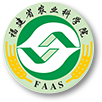Abstract:
As an effective physical pest-control means, the use of lamps to trap pest insects in the field or greenhouses that grow crops has been a common practice for a long time. It continues to evolve as new technologies become available. Lamps that deliver light of fixed wavelength are widely applied. However, they tend to cause collateral casualties to natural predators while catching pests. Consequently, when light-emitting diode (LED) lamps of varied wavelengths came on the market, tea plantations began to be interested in the application as well. For the apparent advantages of reduction on chemical insecticide use and improvement on tea quality, this article summarizes the current status as well as future direction of development and applications of LED devices for our colleagues in the industry. The presentation was designed with an emphasized focus on the technical advances and method optimization in areas such as wavelength for precision targeted trapping, light intensity for attracting pest insects, lamp locations for effective trapping, and environmental design to maximize catches on pests with minimal number of predators.




 下载:
下载: